Week of November 28-December 2, 2016
Kindergarten
Content Objective: I can demonstrate comprehension of the forces push and pull by using a magnet’s force to play a car race game, finish a maze, and attract various magnetic objects.
Language Objective: I can orally explain and draw how a magnet can push or pull.
Sentence Stem:
The magnet pushed ________________________.
The magnet pulled__________________________.
Vocabulary:
Force, push, pull, move, magnets, attract, toward, repel, away from
P.FM.00.31 Demonstrate pushes and pulls on objects that can move.
P.FM.00.12 Describe the direction of a moving object (for example: away from, toward)
First Grade
Content Objective: I can demonstrate knowledge of temperature and how it is measured by observing and recording what happens to the red color of the thermometer when an ice cube is placed on the bulb and when a thermometer is held between two fingers.
Language Objective: I can draw and write to explain what happened to the red color when the ice cube was placed on it and when my fingers were holding it tightly.
Sentence Stems:
The red color went ____________ when it got colder.
The red color went ___________ when it got warmer.
Vocabulary: weather, temperature, hot, cold, warmer, colder, tool, thermometer, measure, meteorologist, bulb, numbers, degrees, Celsius, Fahrenheit, up, down
E.ES.E.2 Weather- weather changes from day to day and over seasons.
E.ES.E.3 Weather measurement- Scientists use tools for observing, recording, and practicing weather changes.
S.IP.01.14 Manipulate simple tools(for example: thermometers) that aid observation and data collection.
Second Grade
Content Objective: I can demonstrate comprehension of water sources and it’s availability by measuring various amounts of water to create a model that shows how much water is actually found in various water sources that are available for use.
Language Objective: I can write to explain my thoughts on the activity.
Sentence Stems:
I learned ______________________________________.
I was shocked that __________________________________.
I wonder _________________________________________.
It is important to conserve water because______________________________________.
Vocabulary: water, conserve, availability, sources, well, groundwater, surface water, ocean, lake, pond, river, atmosphere, salt water fresh water, measuring, teaspoon, tablespoon, Gallon, model
E.FE.E.1 Water is a natural resource and is found under the ground, on the surface of the Earth, and in the sky. It exists in three states (solid, liquid, gas)
E.FE.02.11 Identify water sources (wells, springs, lakes, oceans, etc.)
P.PM.02.14 Measure the volume of liquids using common measuring tools (measuring cups and spoons).
Third Grade
Content Objective: I can demonstrate comprehension of how shadows are formed by using a paper cup, piece of paper, and flashlight to make “Shifting Shadows”.
Language Objective: I can draw and write to explain what I learned about shadows.
Some Sentence Stems:
To form a shadow you need ____________, _____________, and a _______________.
Shadows can be made longer _______________________________.
Shadows can be made shorter by ____________________________.
Shadows can be made smaller by ___________________________.
Shadows can be made larger by _____________________________.
***Challenge Question: When you play outside, your shadow looks different at different times of the day. Why do you think this is so?
Vocabulary: light source, path of light, shadow, light rays, object, background, opaque, transparent, translucent
P.EN.E.2 Light Properties- Light travels in a straight path. Shadows result from light not being able to pass through an object.
P.EN.03.21 Demonstrate that light travels in a straight path and that shadows are made by placing an object in a path of light.
Fourth Grade
Content Objective: I can demonstrate comprehension of how matter can change properties by predicting and observing what happens when heat is added to various solids such as butter, chocolate chips, rock, and wax.
Language Objective: I can write to explain how solids can be changed into liquids.
Sentence Stems:
A solid can be changed into a liquid by______________________.
An example is_________________________.
**Challenge Question?
How can you change a liquid back into a solid?
Vocabulary:
matter, states, solid, liquid, gas, heating, cooling
P.CM.E.1 Changes in States- Matter can be changed from one state (solid, liquid, gas) to another and then back again. This may be caused by heating and cooling.
Fifth Grade
Content Objective: I can demonstrate application of how Earth and other planets stay in orbit by using my prior knowledge of Newton’s Laws of Motion and a ball (Earth) attached to a string (Gravitational Force), and my hand (Sun) model to predict the following:
What will happen when the ball(Earth) is twirled above the head,
if the ball (Earth) had more speed than the gravity pulling on it, and
if the ball (Earth) traveled at slower speed?
Language Objective: I can write and draw(with labels) to explain why Earth and other planets stay in orbit around the sun.
Sentence Stems:
The Earth and other planets stay in orbit around the sun because______________________________________________.
The ball and string model demonstrated this by ____________________________________________________.
*For Drawing- Draw and label the Sun, the Earth, and use arrows to show Gravitational Force and the path Earth is traveling.
**Challenge Question?
Why do you think the moon orbits the Earth?
Vocabulary: orbit, elliptical, motion, rotation, axis, revolve, force, inertia, Newton’s Laws of Motion, balanced force, unbalanced force, gravitational force, non-contact force
E.ST.M.1 Solar System- The sun is the central and largest body in our solar system. Earth is the third planet from the sun in a system that includes other planets and their moons, as well as smaller objects, such as asteroids and comets.
E.ST.M.2 Solar System Motion- Gravity is the force that keeps most objects in the solar system in regular and predictable motion. E.ST.05.21 Describe the motion of planets and moons in terms of rotation on axis and orbits due to gravity.
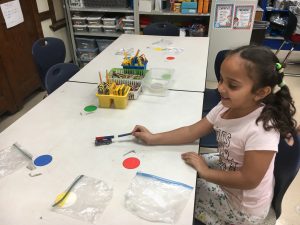
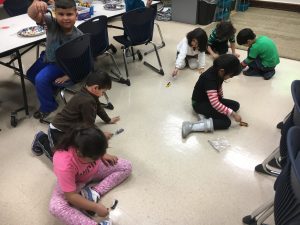
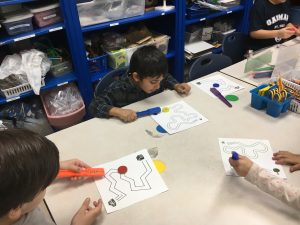
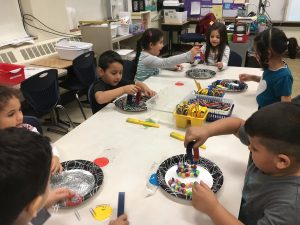
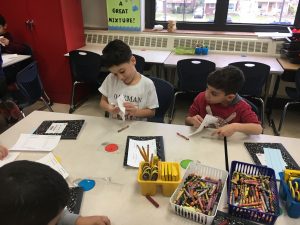
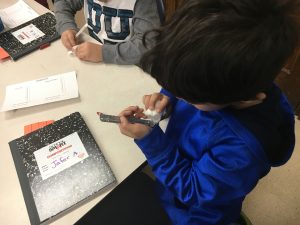
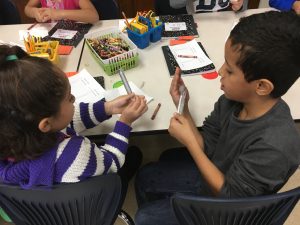
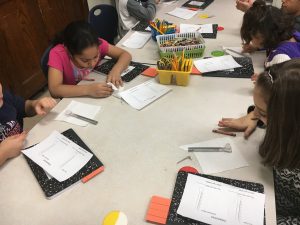

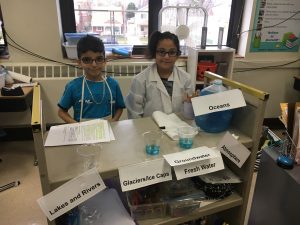
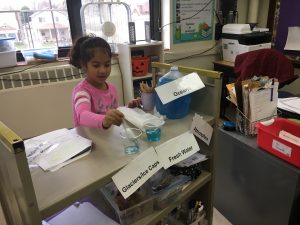
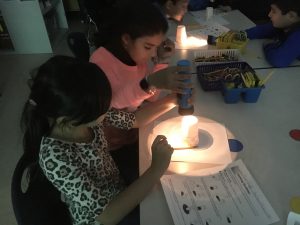
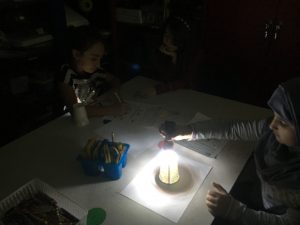
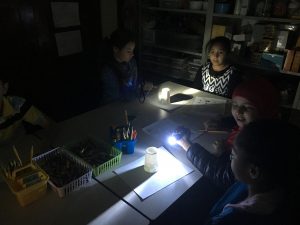
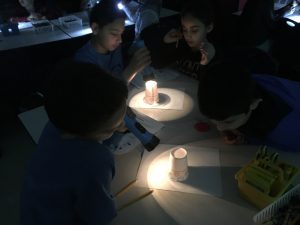
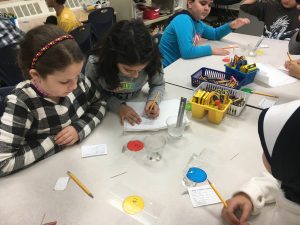
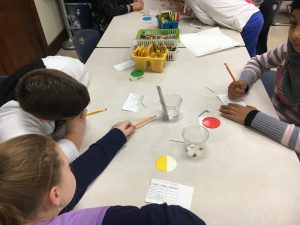
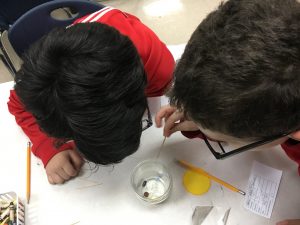
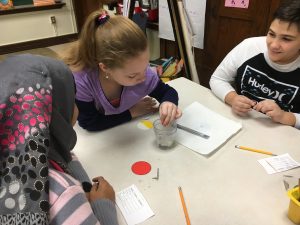
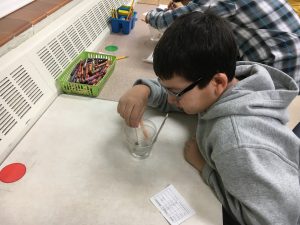
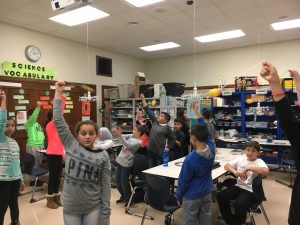

Leave a Reply